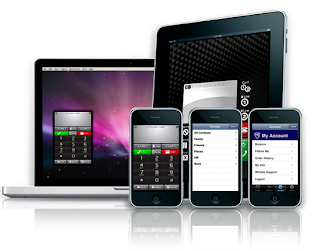Thursday, July 28, 2011

The iPhone and iPad, as everybody knows, are two extremely in style, bestselling devices from Apple. The iPhone is a brilliant phone that can be utilized to make calls, ship text and electronic mail messages, read books on, play music and videos, browse the Internet, and many more. The variety of purposes that may be downloaded and used on the iPhone is only limited by its storage capability-and the purse of the iPhone owner. Some functions (or "apps" for brief) are free, while others price a certain quantity, normally $1 or $2 for the preferred apps. On the other hand, the iPad is a a lot bigger pill machine, which is used primarily for connecting on-line, studying books, and taking part in multimedia files. Basically, the iPad can do all of the issues that the iPhone is able to, besides make calls and send text messages. (There are some iPad apps that do allow the sending of texts, however with certain restrictions.)
Briefly, the iPhone and the iPad are much the identical in terms of what they can do. Their obvious distinction is that the iPhone is a cellphone, and the iPad is not. In other words, the iPhone might be-and is primarily-used to make telephone calls, whereas the iPad is extra like a netbook or transportable private computer. One other difference that stands out is their sizes. The iPhone has a 480×320 touchscreen, while the iPad has a a lot larger one which measures 1024×768 pixels. Wanting on the two gadgets, about six iPhone models could be placed on the surface of an iPad.
The scale difference is a key factor in evaluating iPad and iPhone apps. Virtually all iPhone apps (except those for making calls) could also be downloaded on the iPad. The apps will work just about the same except that they will appear greater to fit the bigger iPad touchscreen. But not all apps meant for the iPad will work on the smaller iPhone. Apps that are native to the iPad use better detail to make the most of the bigger touchscreen space. If these apps may very well be "shrunk" on the smaller iPhone screen, they would not look as nice-in actual fact, they may as effectively be unreadable. That is the explanation why native iPad apps cannot be downloaded to an iPhone. However, simply to make some extent clear, the reverse may be finished: most iPhone apps will be downloaded to and used on an iPad.
Examples of native iPad apps that won't work on the iPhone are journal and newspaper apps. On the iPad, a magazine unfold seems to be nice and could be very readable. But imagine the same on an iPhone screen. The photographs and textual content in a magazine or newspaper article will not simply match on the smaller space.
Can it's said then that apps are better on the iPad than on the iPhone? That is near the reality, but it's not quite there yet. Whereas it is true that virtually all iPhone apps can migrate to and performance well on the iPad, an aesthetic loss is incurred within the process. Apps which can be native to the iPhone, when considered in an enlarged method on the iPad, look less sharp, extra pixelated. One may see jagged edges and blurry components on the graphics of those apps. This naturally outcomes from enlarging or doubling graphics originally composed for a smaller screen. This impact is named "pixel doubling."
To appropriate pixel doubling, the iPad person is given the option to view a native iPhone app in its original, smaller size. Thus, on the iPad, the app will occupy just about one-half of the screen. For some native iPhone apps, there may be also an option to download a higher-decision version. With this, the app looks great on the iPad as it does on the iPhone.
There too are apps that have both iPad and iPhone versions. The consumer simply has to obtain the correct model to enjoy the apps with all their graphics and performance intact.
0 Comments:
Subscribe to:
Post Comments (Atom)